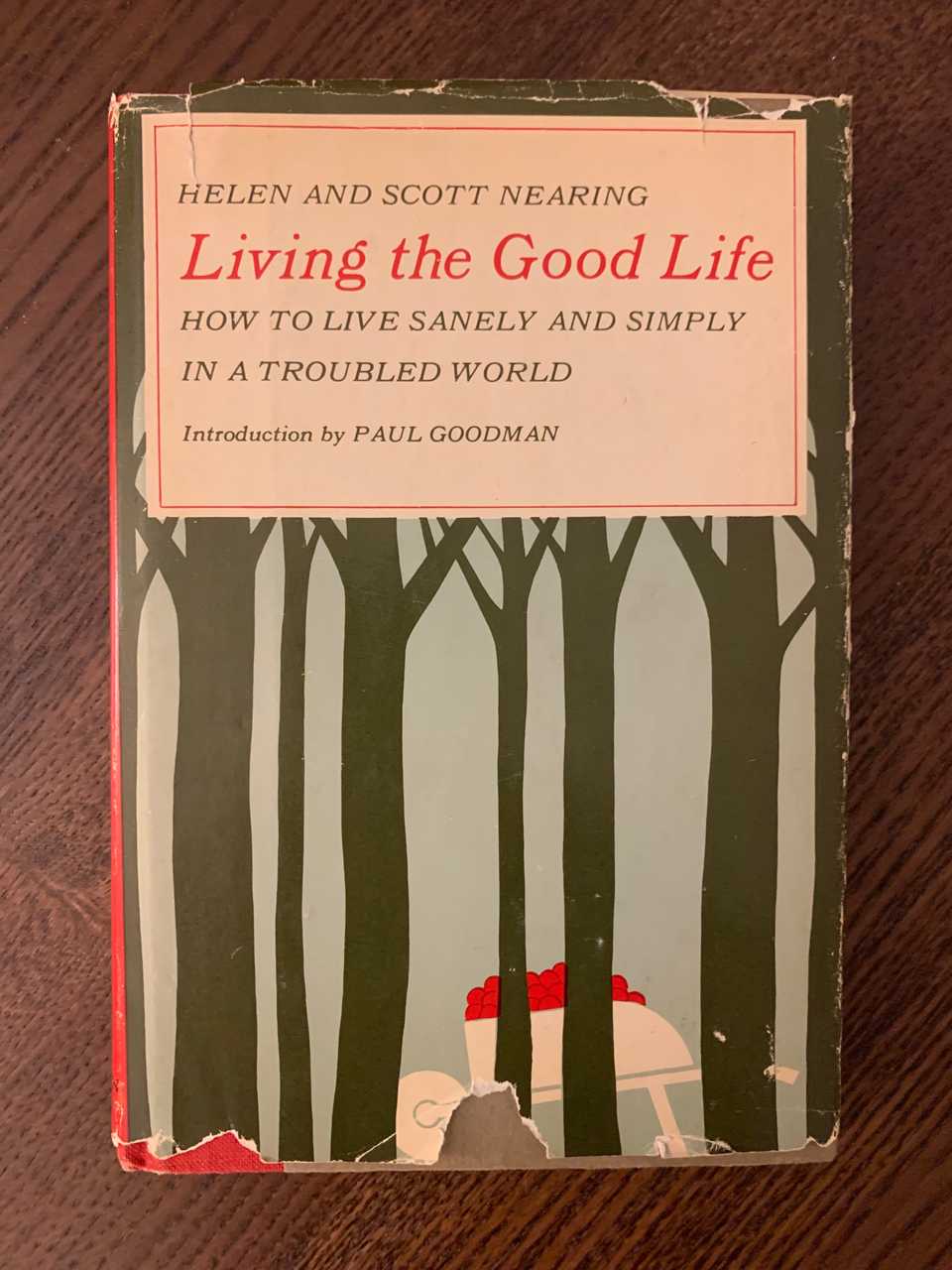Helen and Scott Nearing were huge influences on me as a young adult. My father originally turned me on to their book Living The Good Life: How to Live Sanely and Simply in a Troubled World which was an important catalyst for the original back to the Earth movement of the mid-20th century. My father even corresponded with them, I have his letter and their reply. I even managed to locate their house in Vermont when I was living nearby, a stone house they built mostly from materials on their land!
Scott Nearing’s attention to detail, how he devised the best methods for any homesteading task is way beyond my efforts — but like most people, I have to work a job and raise a child, I don’t have the time or finances to become a total Dharma Bum! The Nearings might have lived a “good life” moving back to nature, but was it real or attainable for ordinary people without the backing of their trust funds? Was the Nearing’s back to the woods experiment mostly sentimental escapism? Could they have accomplished more just by throwing in their lot with the workers in a city, sharing the load, teaching, helping workers unite around common causes and still find ways to pursue urban farming, writing, music and art?
To be fair, at the time when they wrote their book, people mostly lived in cities so they were reacting to that, looking for a refuge from the complexity, noise and pollution. But it’s very expensive to recreate a modern lifestyle in the woods or suburbs — even Thoreau was just a very short walk from town where he could have a nice dinner away from the cabin, maybe talk to Emerson’s wife. As a white male, I understand that my privilege to live comfortably small in a city like New York is a bit like a built-in trust fund. But is the answer to abandon the city, flee to Long Island and just consume more land, cars and stuff I really don’t want or need? Maybe it is for some people, and seriously no judgement here, but hopefully some of what I’m writing about can apply to any living situation.
Re-creating human comforts from scratch requires money, time and effort — a lot more than people realize. You need a standalone house, vehicles, tools — everything to maintain the physical property and keep your family entertained. In contrast, living in a shared condo, coop or apartment in New York is about repurposing a space, in many cases built over 50 years ago and lived in by many different types of people over the years. Buildings are regularly inspected by the city and usually employ a superintendent that does maintenance and necessary repairs.
NYC buildings are great examples of urban recycling, people move in and out, no new Earth is broken and residents can help each other share life’s journey. This becomes especially important as you get older, needing assistance; residents in a healthy building look out for each other. I would also argue that building dwellers recycle a lot more than our suburban counterparts, not because we are better or care more, it’s just easier! And there are recycling stations on nearly every city block to capture transient waste.
Imagine if the Nearings had stayed in the city and pioneered urban farming instead of trying to become small-scale subsistence gardeners. Maybe the urban farming movement and feeding large numbers of people with locally sourced food would be a lot further along.
